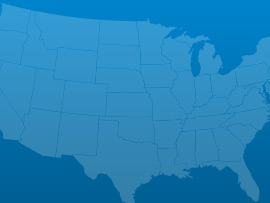Only an estimated 2% of all known dams in Alabama are being inspected for safety, maintained, and have emergency action plans in place for use in the case of a failure. Alabama’s known 2,200 dams that were built generations ago continue to age and the size of the population downstream of these dams continues to increase, placing more people and property at a greater risk. Only about 1 in 5 of identified high hazard potential dams receive inspections. Alabama is the only state left in the U.S. lacking a State Dam Safety Program and a full inventory of dams. The risk of not inspecting or monitoring dams leaves the statewide dam safety risk unknown and also blocks the state from fully leveraging federal funding to fix 2015 Report Card for Alabama’s Infrastructure identified high hazard dams. Putting emergency action plans for known high hazard dam areas to use in the event of an impending dam failure are common sense safety measures. Alabama should enact a state Dam Safety Program to identify and prioritize repair of aging dams and reduce the risk of dam failure in the future.
 Aviation
Aviation Bridges
Bridges Dams
Dams Drinking Water
Drinking Water Energy
Energy Inland Waterways
Inland Waterways Rail
Rail Roads
Roads Transit
Transit Waste & Storm Water
Waste & Storm WaterA: Exceptional, B: Good, C: Mediocre, D: Poor, F: Failing, ?: Incomplete
Each category was evaluated on the basis of capacity, condition, funding, future need, operation and maintenance, public safety, resilience, and innovation
Aviation
75 public-use airports
Bridges
1,405 of the 16,078 bridges are structurally deficient
Bridges
$62.80 million in bridge funds came from the Federal Highway Bridge Fund in 2011
Drinking Water
$7.9 billion in drinking water infrastructure needs over the next 20 years
Energy
11.081 gigawatt-hours of renewable energy every year, ranking it 6th
Hazardous Waste
14 sites on the National Priorities List
Inland Waterways
1,270 miles of inland waterways, ranking it 6th nationally
Levees
17 miles of levees
Ports
69.5 million short tons of cargo in 2012, ranking it 12th nationally
Public Parks
$68.9 million of unmet needs for its parks system
Rail
24 freight railroads covering 3,254 miles across the state, ranking 17th nationally by mileage
Roads
$1.2 billion a year in costs to motorists from driving on roads in need of repair, which is $321 /yr per motorist
Roads
10,401 of the state’s 101,811 public roads are major roads, and 6% are in poor condition
Schools
$5.1 billion in estimated school infrastructure funding needs
Transit
6.6 million annual unlinked passenger trips via transit systems including bus, transit, and commuter trains
Wastewater
$4.4 billion in wastewater infrastructure needs over the next 20 years

March 03, 2017
As the President’s repeated in his address to Congress his pledge to dramatically increase infrastructure spending to the tune of $1 trillion, various Congressional Committees

March 01, 2017
On Tuesday night, President Trump addressed a joint-session of Congress for the first time in his presidency. Infrastructure was among the many issues he discussed.

February 28, 2017
U.S. motorists set a new record for vehicle miles travelled (VMT) in 2016, driving over 3.2 trillion miles, an increase of 70 billion miles from

February 17, 2017
Romantic dates, the Grammy awards and celebrating black history are not the only milestones of this week; the Oroville dam crisis in California and the